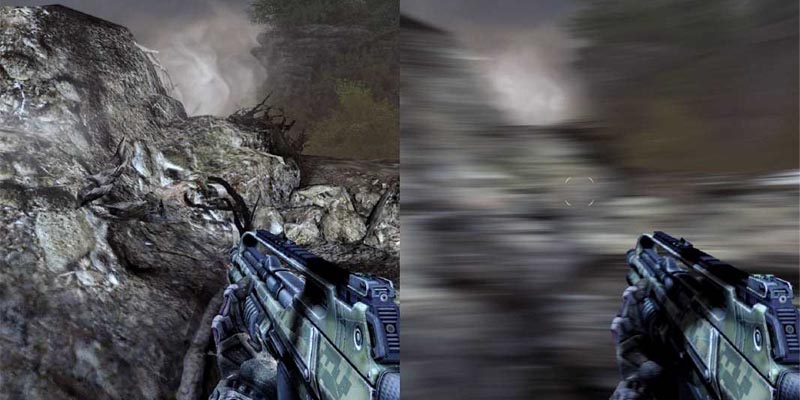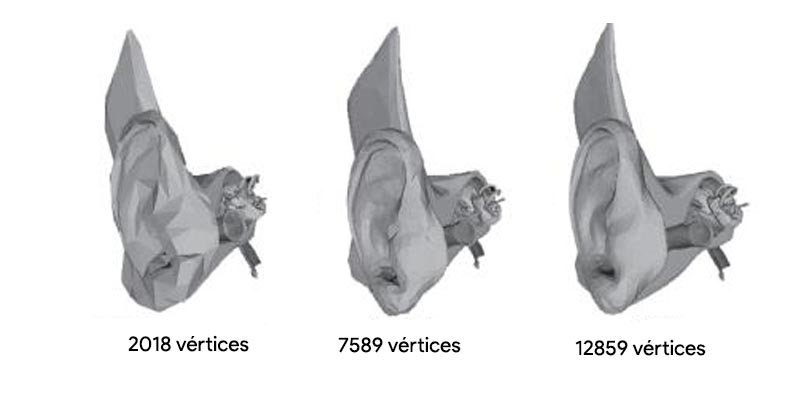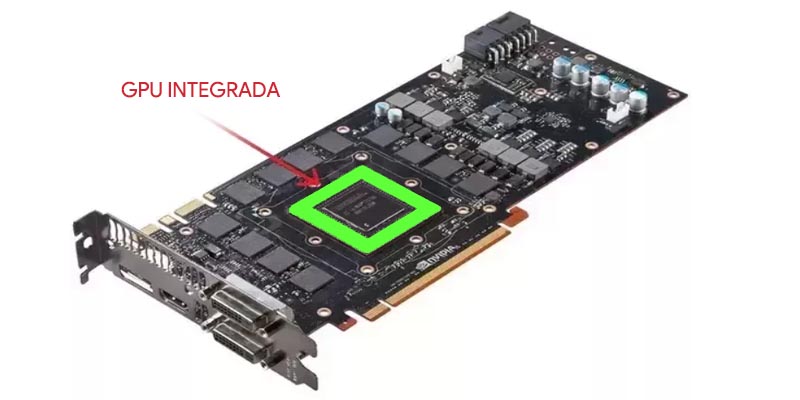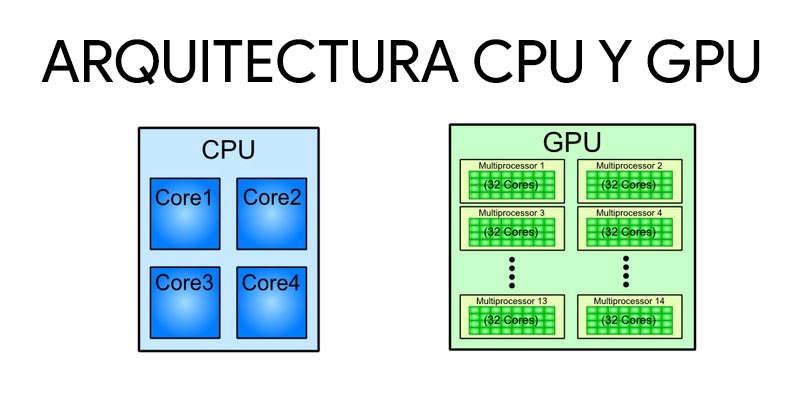
Index:
UPDATED ✅ Do you want to know what are the functions and characteristics of the GPU of your computer or PC? ⭐ ENTER HERE ⭐ and discover the types ✅ EASY and FAST ✅
The GPU or Graphic Processing Unit It is a very important component in today’s computers since allows amazing graphics to be played and that, of course, users can enjoy them. Hence, if you are a great fan of video games and high definition content, you are interested in knowing everything about it.
This component works as CPU-likebut mainly analyzing the computer images without considering other more general aspects.
Also, there are several types, each with its pros and cons, and today you will also meet them to get the graphics card that best suits you. We will also show you the differences between this and the CPU from a computer. Finally, we will deal with the widespread concept of GPU acceleration.
What is the GPU or Graphic Processing Unit and what is it for in a computer?
This is a technology gadgets video component (computers, televisions, smartphones…) that has the function of render graphics. In addition, it helps to send all this information to the monitor.
This is, on the one hand, interprets the data that the CPU sends to it, sorts it and calculates it the values that are of interest to you to store it all in your own memory; for the other, performs a processing of the stored and transforms themso that the output device in question (usually a monitor) can analyze and interpret it analogically.
It is worth mentioning that it is currently including other functionalities derived from supercomputing and network management, as well as TV tuning, video capture, special connectivity with peripherals…
In any case, his work includes the generation of antialiasing, rendering, texture mapping, blurs, shadows, tessellations, speculate, etc.

This component, as we started by saying, it is very similar to a CPU, something like the version of this for the graphical context of the teams. graphics processing unit is a coprocessor that analyzes the images to try to lighten the load on the CPU of a team.
Thus, said load is lighter when it comes to being processed by the central unit and, therefore, it can perform its functions with more ease, not having to force it.
Physically speaking, we find a piece of hardware, called a graphics card, which includes the set of software and other elements who work on these tasks. One of them is the GPU, although it is already common to use both concepts as synonyms. After all, the processing unit is the main part of what the card is, which, we repeat, is the physical element, the hardware that contains everything.
This usually attaches to the motherboard, just like some of the other components in a computer. It can also be just an integrated chip and software on the board or even on the CPU, not attachable, that is, it is not a piece to add (we will see it later when we know the types of cards).
Some ways to name this unit, plus graphics card (that we have already seen that they are not the same but that we have decided to give them the same meaning) yugraphics processing unit are video card, video card or graphics accelerator.
Speaking of the complete concept of graphics or video card, we cannot fail to mention that other parts of it are the GRAM, which is its graphics memory, with random access (RAMDAC), responsible for transforming a digital signal into analog, and the outputs which can be DVI, VGS, HDMI, DP…
As to its appearance, occurs in the 80s and it comes, like many other innovations in the sector, from the hand of IBM, which used an Apple computer as inspiration to achieve the development of what would be the first video card. As a curious fact, indicate that this was interchangeable. It had 4 kB and was connected to a monitor.
Top 10 best selling GPUs
Next we show you a list with the 10 best-selling GPUs of the moment so you can choose the best one for your PC.
Best Sellers No. 1
Bestseller No. 2
Best Sellers No. 3
OFFERBestseller No. 5
OFFERBestseller No. 6
Bestseller No. 9
Operation and characteristics of the GPU in a PC
Graphics processing units (GPUs) are designed with many processing cores running at low clock rates. This is the opposite of CPUs, which have few cores but very high clock frequencies.
The computer performs an analysis of the information that the graph has sent and transforms it into information that the output device or peripheral can interpret.
Nowadays, unit design Graphics processing includes two main functions: pixel processing and vertex processing..
Next, we will see how each of them works:

Vertex processing
This is a fairly simple job for the most modern graphic processing units since the consumption of resources is minimal.
The procedure is the next: get the information of the vertices, which has already been computed by CPU and then, render the rotation, spatial order, or segment of the vertex that is most visible graphically. With this procedure you can continue with the pixelation.
The vertex processing is done in advance by the central processor so that the space is reordered, the graph is visible and the image can start to be pixelated.
pixel processing
At this moment is when render the graphics themselves that the user can see.
It is a fairly complex process and, furthermore, requires a higher processing load. This occurs because all layers and effects will be applied that are necessary for much more worked and quite realistic textures to come out.
Finally, once the information from the graphics is processed in the ways we have just seen, it is taken to a monitor, which will know how to interpret it.
Types of GPUs that exist today
There are currently three types of charts on the market that differ mainly in the way they are implemented.
Let’s see what the main differences between them are:
dedicated cards
They are the graphic units that have more power. In addition, they have a series of features and specifications for which they are specifically prepared. Hence, they are also the most efficient. The fundamental characteristic of a dedicated card is that has a completely independent RAMwhich will only be used by the graphics unit.
A dedicated card is one that It is located integrated in the motherboard. linked by a specific port, although this is not always the most operative.
Integrated Graphics

integrated units use system memory in order to perform its own functions. In restrained computers they are the most used because they consume less. They are also used on tablets and smartphones.
The central core of these cards used to always be on the motherboard; but for the most recent models of AMD and Intel they have decided to integrate these cards in the processor itself. This has been called AMD Accelerated Processing Unit (for the AMD brand) and Intel HD Graphics (obviously for the Intel brand).
Hybrid Cards
These types of cards are what we could call low cost. This is because they keep prices very low but at the same time ensure certain power levels suitable for virtually all home and office equipment.
hybrid cards they share the system memory, although they integrate a small amount of their own memory It is used to carry out immediate tasks.
With this type of cards, in addition, the latency time of the system memory is decreased.
What is this GPU acceleration?
GPU acceleration has been around for quite some time, but it’s only now that this feature is being leveraged for web browsers, which is where we see it implemented most often. With this acceleration much better performance and lower energy consumption is achieved.
Encoding accelerated by the graphic processing unit makes it possible for you to enjoy a 2 to 5 times higher image conversion when it comes to making, worth the redundancy, a conversion of graphics or videos. Thus, the combined power of CPU plus GPU is used to speed up the performance of those analysis applications and engineering.
GPU-accelerated computing makes the GPU is assigned the work of the part of the applications where it is necessary to perform calculations in a more exhaustive way, while lighter code runs on the CPU. This will make the user believe that the applications are running much faster.
In fact, this feature is used in the field of artificial intelligence (with novelties in drones and robots) and in certain applications that require a large CPU consumption when solving complicated operations.
What are the differences between the CPU and a GPU?

We have talked about both throughout the text, but how are they different? This lies mainly in the architecture of both.
Although both elements are designed to process data, the GPU is more efficient for calculating graphic information, has been created specifically for this. It is specialized for this task and may be less efficient at others.
The CPU, being a general purpose processor, can do all kinds of calculationssince it has been designed to process serial data, and can, in fact, also work with graphic information.
In fact, graphics takes work (graphics) away from the CPU and when a certain level of acceleration is applied to it, it can perform parallel processes in terms of graphics work.
The GPU is capable of running many more programs at the same time (in parallel), although these must be much more specific. The ability to perform parallel jobs that the graphics card has can even multiply by a hundred the performance that a CPU will have when performing similar operations.
As for the physical design of a GPU, it has more silicon, which allows it to perform very specific tasks efficiently. The CPU follows a Von Newman architecture and the GPU uses the Circulating Model, focused on parallel processing.
Hardware









